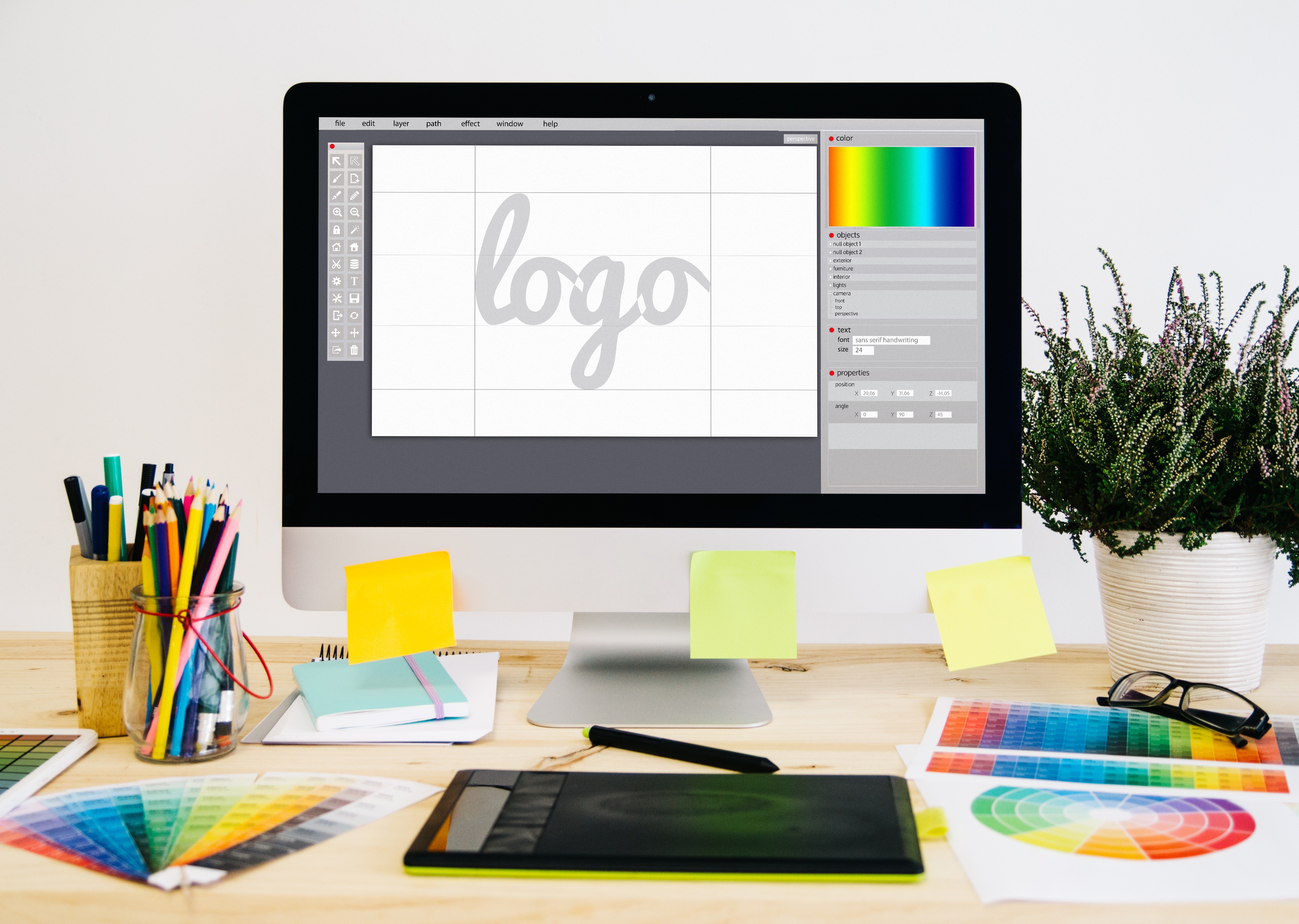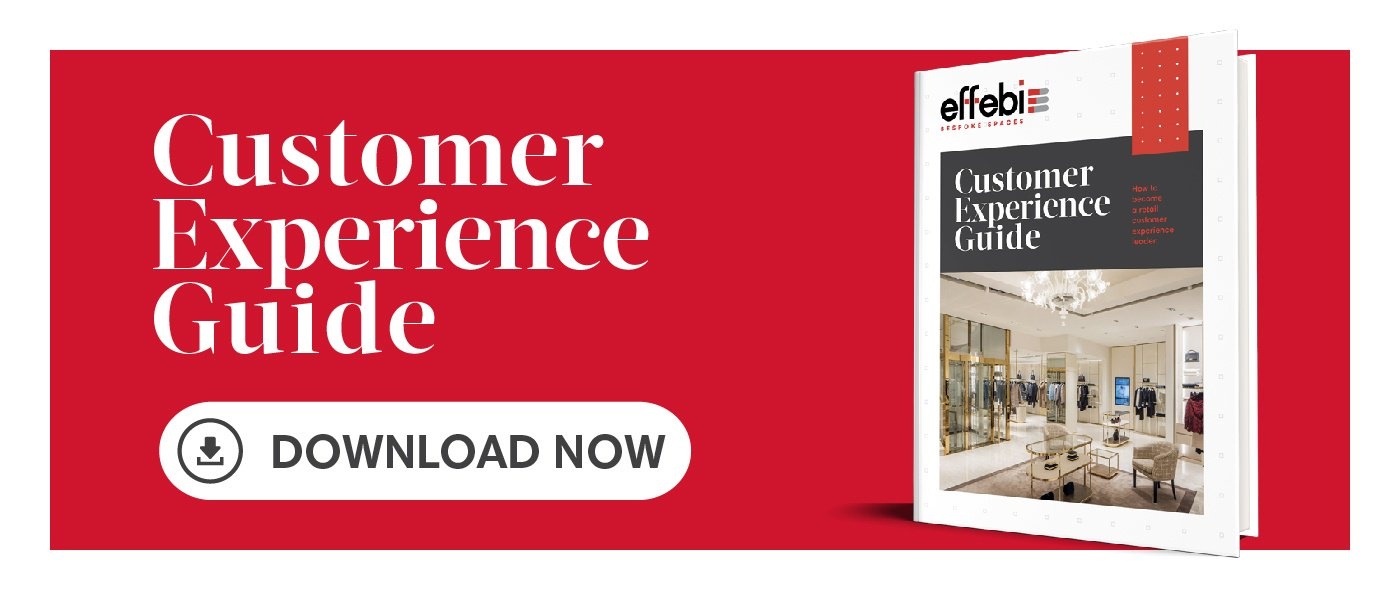8 ways to implement brand identity in store

Brand identity is a determining factor for market positioning and experts have been in agreement for some time now it can be key to running a successful store. This is partly due to the fact that shopkeepers are no longer simply product suppliers, but are increasingly becoming partners in their customers' lifestyles. Customers need to build relationships with the shops they trust and in order to do so, shopkeepers need to strengthen their brand identity and stand out from the crowd.
But how should you go about it? We've come up with 8 ways to help implement brand identity in store.
- Consistency
- Unity between various identity aspects
- Signage
- Your logo
- Colour schemes
- Music
- Fragrance
- Lighting
![[Effebi]---Immagini-con-dati-(1)](https://blog.effebispa.it/hs-fs/hubfs/%5BEffebi%5D---Immagini-con-dati-(1).jpg?width=960&name=%5BEffebi%5D---Immagini-con-dati-(1).jpg)
1. Consistency is rule number one
Implementing brand identity in store is an important process that begins with deciding on what emotions you want to convey to your customers in order to ensure they think of you when they feel those emotions. It's not just about the shopping experience in store, in fact, as a manager you have a responsibility to draw up a more general framework in order to create unity between the various aspects of your brand identity.
Consistency and impact are the keywords here. You need to send your customers a unified message, which is consistent and has impact. From the logo, to the choice of font used in written communications to visual and graphic aspects, all elements must be consistent and must attract the customer's attention. Every time a consumer interacts with your brand - whether directly in store, via email, on social media or on your website - their experience should evoke the same emotion. Without a consistent communication system, you risk losing your identity.
2. Unity between the various aspects of your identity
Unity across all channels will allow your brand identity to resonate more strongly, making it more easily recognisable. Here are some ideas on how to guarantee consistency:- Document your brand identity: define your company's "tone of voice," your mission and the guidelines for using your logo. Make sure that all documentation is distributed throughout your company and provide examples to help employees understand how to make use of the various elements.
- Encourage communication between departments: Make sure that store managers, the marketing department, product managers and employees are all on the same page.
- Identify your audience: It's useful to identify your audiences, their weaknesses and the ways in which your company solves their problems. This helps employees to connect more easily with customers and to learn more about the brand they work for.

3. Signage is important
Signage at a point of sale is often the first point of contact between a consumer and a store. When customers approach the store entrance, they must be put in the right state of mind to enter your world.
That's why you should think about the right in-store set-up when implementing your brand identity. Window displays, signage, exhibitors and posters are essential to attract the attention of potential customers.
You should invest in your store's light-up sign and make sure that your store name is clearly visible. Light-up signs are the best way to attract your customers' attention.
4. But what about the logo?
Your logo is key to your identity and must be depicted in the best way possible. The logo should also come into play during your customer's shopping experience and in order to make this happen, you must find a way to include it in your store's brand identity.
Randomly putting your logo on different materials doesn't make much sense, and just sticking it anywhere there's space makes even less sense. A strategy is also needed for the arrangement of your logo and to facilitate viewing during the purchase experience.

5. Focus on colour combinations
Your colour scheme improves recognition and one of the ways to improve brand identity is to use a defined colour palette that identifies your brand. You should bear in mind that colour schemes will have a strong psychological impact on your customer and can evoke specific emotions and feelings.
Red, for example, is an exciting colour that expresses boldness and youth. Blue is a cold colour that instils feelings of serenity and trust. Purple is the colour most associated with creativity, orange with cordiality, yellow with optimism and grey or green with health, evoking feelings of peace, calm and balance. When defining your brand's identity, you need to be clear about the feelings you want to instil in your customers.
6. Music is also important
Playing a certain type of music can help you implement brand identity in store. However, in addition to your choice of music - which should be well-defined and recognisable - you must also pay attention to volume. The creation of a "sound landscape" is important, but carefully choosing the right volume in store will result in a real leap in quality.
You've probably shopped at Abercrombie & Fitch before and have noticed that when you ask your friend what he or she thinks of a particular shirt you have to shout at the top of your lungs. When it comes to customers, loud music may not exactly result in the most pleasant shopping experience, but it can actually be a good idea for some stores with very young target audiences. In this case, brand identity overlaps with customer identity and the messages conveyed to the target are consistent and recognisable.

7. Fragrance can be a real differentiator
Just like with colour schemes, fragrance can also influence customer mood, emotions and perception, evoking a strong emotional reaction to your store. Using a certain fragrance in store is one of the ways to implement brand identity. Think about the ways you would like your customers to think about you and find a fragrance that evokes feelings that are consistent with those goals.
8. Lighting at the point of sale
Lighting not only helps customers see your products better but can also contribute to them making purchases. Some shopkeepers think that lights help products to stand out and attract customers, but in reality, if positioned incorrectly, they can have unwanted effects and may not best represent your brand's identity.
Brands like Sephora, for example , use very cold, almost glacial lighting to bring out the colours in their products. If you would like your customers to feel calm and relaxed in store, you might think about playing with softer lighting; while if you want to give the impression of strong energy and vitality, you should try to increase the intensity of lighting as much as possible.
 previous news
previous news





